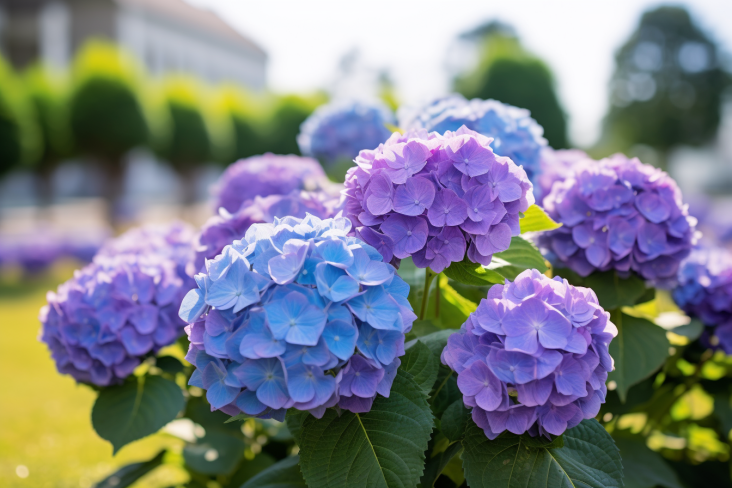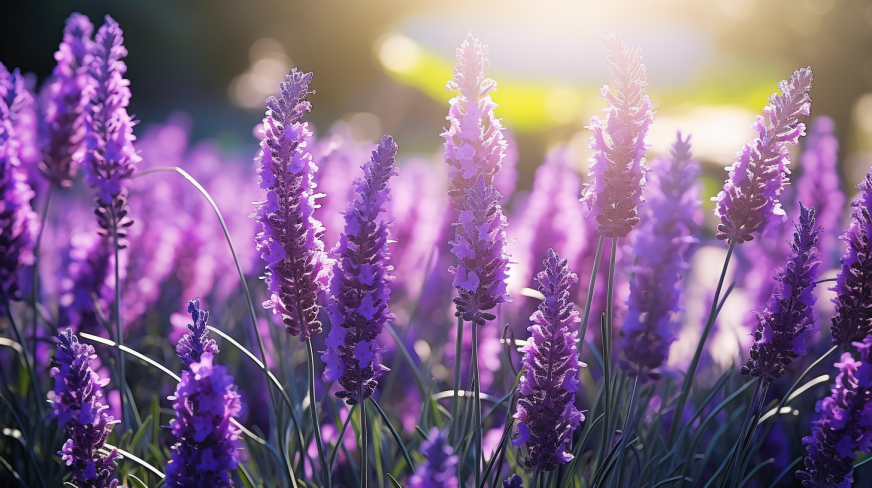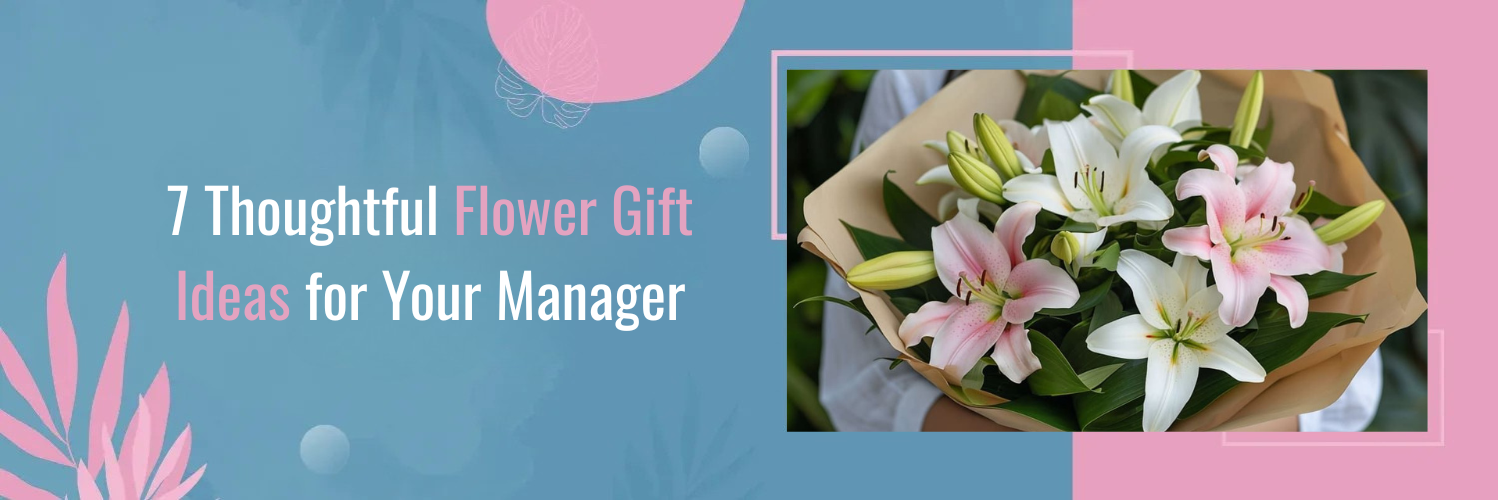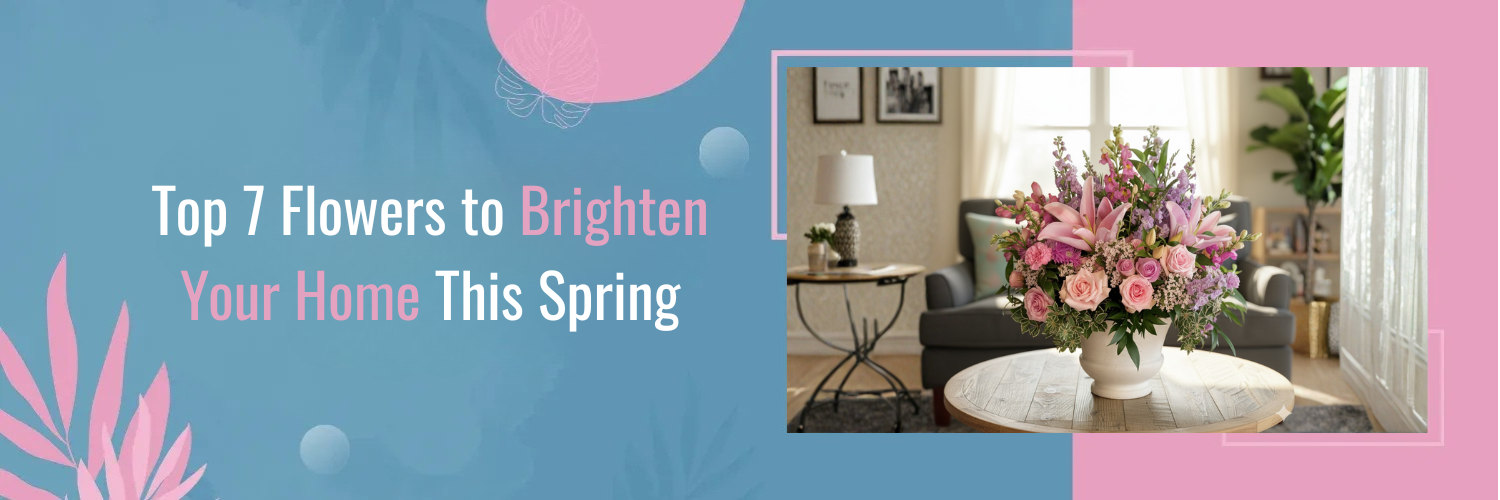Purple-Flowering Plants

Looking to jazz up your garden with a royal touch? Purple flowers, linked to richness and elegance, might be just what you need! These graceful blooms, bursting in shades from soft lavender to deep violet, provide a stunning chromatic diversity. Expect to discover a range of purple-flowering plants from annuals to perennials, ground covers to climbing varieties, with tips on how to make them thrive in your garden. Don’t worry about attracting bees and butterflies—they love purple! So, ready to add a pop of purple to your green space? Let’s dive in!
10 Beautiful Plants With Purple Flowers For Your Garden
1. Allium

The Allium plant, also known as ornamental onion, presents elegant ball-shaped flowers, typically in a majestic purple shade.
- Loved by pollinating insects.
- Displays a sphere of tiny star-shaped flowers.
- Can grow in a range of hues and heights.
2. Alpine Betony

Looking for a whimsical touch to your garden? Meet Alpine Betony, a lovely perennial that thrives from early spring to fall. This plant is quite the crowd-pleaser with its vibrant green textured leaves and pretty purple flowers. Here are some features that make the Alpine Betony an excellent choice:
- It shoots up to a height of 18 to 20 inches, boasting radiant shades of warm, pinkish purples.
- Plant it in borders or containers, in full sun to partial shade.
- It’s a low-maintenance plant, needing only infrequent watering and summer feed.
- Alpine Betony is a favourite among pollinators but is unpalatable to deer and rabbits, making it an ideal protector for your other garden favourites.
3. Purple Anemone

The Purple Anemone is a charming herbaceous perennial you’d love for your garden. Blooming beautifully in spring, it’s a dynamic part of the Buttercup family.
Top features include:
- Lilac, blue, white, and pink blooming colours
- Thrives in partial to full shade
- Cultivates well in slightly acidic, rich soil
- Drought-tolerant when dormant
- Spreads easily once established
However, keep in mind:
- Slightly challenging to grow.
- Slow to grow initially.
- Only should be moved in spring.
- Not taller than 12 inches, limiting visibility.
- Requires feeding with organic fertilizer or compost in late fall.
4. Anise Hyssop

Anise Hyssop, also known as Agastache foeniculum, is a beautiful lavender-bloomed plant from the mint family, producing a licorice-like scent and attracting bees and butterflies.
Its top features include:
- Licorice-scented foliage
- Lavender blooms
- Attraction for bees and butterflies
- Edible flowers and leaves
- Growth up to 4 feet
The Pros:
- Drought-tolerant, thriving with infrequent watering.
- Resistant to deer damage.
- Licorice-scented, offering a pleasant aroma.
- Suitable for sunny as well as partially shaded areas.
- An attraction for pollinators, benefiting your garden ecosystem.
The Cons:
- Prone to root rot, requiring well-draining soil.
- Can grow quite tall, requiring space.
- Requires early spring feeding with a balanced fertilizer.
- May be unaesthetic when the plant is bruised.
- The scent may be strong or unfavourable to some.
5. Purple Aster

Your garden will bloom with the addition of Purple Aster plants. These gems, famous for their stunning purple flowers, are not only beautiful but also inviting to pollinators such as bees and butterflies. These fall favourites can grow up to 24 inches tall, thrive in zones 5-8, and can stand bright in your garden when most flowers start to fade.
Top Features:
- Offers various shades of purple, from amythest to burgundy, as well as pink, white, and yellow
- Attracts late-season pollinators like bees, butterflies, and hummingbirds
- Grows 18 to 24 inches tall and up to 36 inches wide
- Hardy in zones 5 through 8
- Blooms in late summer through early fall
- Extremely flexible, available as annuals, perennials, or biennials
- Tolerant to full sun or partial shade and is drought-tolerant as well.
6. Purple Balloon Flower

The Balloon Flower presents a charming addition to your garden with its radiant purple hues, aptly named for its balloon-like buds that burst into star-shaped flowers. Showcasing an enduring beauty, this plant is not just a feast for the eyes but a no-fuss addition to your green space as well.
- The Balloon Flower is native to East Asia, offering mesmerizing balloon-shaped buds that turn into star-like flowers.
- It’s a drought-tolerant plant that thrives in well-drained soil under full or partial sun.
- Best suited for growing zones 3 to 8, this plant delights in rich soil with moderate moisture.
- It’s an excellent complement to gardens focused on purple hues, sitting well alongside other purple blooms like lilacs and clematis.
7. Bear’s Breeches

Bear’s Breeches (Acanthus mollis) is a standout perennial native to the Mediterranean. Here’s why it would be a compelling addition to your garden:
- Its striking hooded flowers grow on tall spires above bold, spine-covered leaves
- Blooms last for months under full sun, adding a long-term splash of purple
- Its impressive size (3 to 5 feet tall), makes it excellent for accenting or adding height to your garden bed
- Hardy in winter temperatures down to -20 degrees F
- The plant is deer and rabbit-resistant, making it a smart choice for wildlife-prone areas.
8. Bee Orchid

Meet the fascinating Bee Orchid, an expert at floral mimicry. If you’re a fan of purple flowers and uniqueness, this is most certainly a star addition. Here’s why:
- Its stunning plumage includes three deep purple petals, their hue rivalling the night sky’s beauty.
- The fourth petal has an uncanny bumblebee resemblance, contributing to its intriguing plant-pollinator relationship.
- It thrives best in zones 6 to 9, requiring moist, well-drained soil and light shade.
- Besides being an eye-catcher, the Bee Orchid symbolizes beauty, elegance, love, and wealth.
9. Bell Heather

Bell Heather, a.k.a Erica cinerea, is an exquisite touch of purple for your garden. This shrub boasts brilliant flowers and brings an element of charm that’s hard to rival.
Characteristics of Bell Heather:
- It grows to about 20 inches tall
- Exhibits vibrant pink-purple bell-shaped flowers
- Mostly pest-free and deer-resistant
- Thrives well in drought conditions
- Prefers full sun
Pros:
- They’re low-maintenance and easy to grow.
- Resilient towards pests and deer.
- Well-suited for various landscapes, including coastal and rock gardens.
- Resistant towards drought.
- Blooms from early spring to early fall.
Cons:
- Requires well-drained soil to grow.
- Limited to growing zones 6-8.
- Needs full sun exposure.
- Becomes straggly without annual pruning.
- Requires a regular watering schedule.
10. Purple Cosmos

If you’re a fan of purple, then Purple Cosmos is a wonderful addition to your garden. Its vibrant hue is an eye-catcher and a guaranteed magnet for butterflies and birds.
Features of Purple Cosmos:
- Rich, purple colour
- Attracts birds and butterflies
- Drought-resistant
- Self-sowing, reappearing annually
- Requires full sun
Pros:
- Easy to grow in well-drained soil.
- High tolerance to poor soil and drought.
- It attracts pollinators, boosting biodiversity in your garden.
- Self-sowing capability means less replanting is required.
- Blooms last from June to November, providing an extended colour burst.
Cons:
- Needs sheltering from strong winds.
- Over-fertilization can prevent its blooms.
- Requires moderate watering.
- It can crowd out other plants because of its self-sowing feature.
- Full sun exposure is required, limiting shaded areas for planting.
Purple plants can add a dash of elegance and drama to your garden in a heartbeat. With a range of shades from soft lavender to dark violet, they cushion your green space with soothing beauty.
Pollinators like bees and butterflies are integral to your garden’s health, as they aid in plant reproduction by transporting pollen between flowers. Including purple flowers in your garden attracts more of these pollinators, enhancing biodiversity and enriching the ecosystem. Here’s why:
Purple flowering plants astound with their versatility, serving as a tapestry of colour in gardens and interiors. From vegetables to flowers, here’s how these stunning plants adorn various spaces:
“Hardy” plants are survivors—they thrive in a variety of conditions and handle tough weather like champs. Take the purple ‘May Night’ salvia, for example, it’s a rugged beauty hardy in zones 4 to 8.
Purple flowers can instantly uplift the appeal of your landscaping, adding a dash of elegance and enchanting colour. Their impact is twofold: commanding attention and adding depth to your garden. Here’s why:
Dive into the deep, royal hues of purple plants which transform your garden into a regal spectacle. From mystery to wealth, these vibrant beauties carry a potpourri of powerful meanings.
Purple flowers can add an enchanting allure to your garden, offering a royal splendour. Abound with symbolism, these blooms heighten the emotionality and elegance of your outdoor spaces. Here’s why:
Tips for Growing and Caring for Purple Flowering Plants

1. Well-drained Soil for Purple Flowers
- Well-drained soil is vital for growing purple flowering plants, as it ensures adequate air and water movement for the roots.
- To achieve this, start by incorporating organic matter like compost into your garden soil to improve its structure and drainage.
- Another option is to build a raised bed which ensures excess moisture naturally drains away, preventing soggy soil.
- For instance, lavender, a popular purple flowering plant, thrives in well-drained soil in full sun.
- Make the right preparations, and watch your favourite purple blooms reach their full potential. Give it a try!
2. Sunlight and Shade Needs
Sunlight and shade play a crucial role in the growth of your purple flowering plants. Managing these factors can ensure vibrant, lush blooms.
Here’s how:
- For the majority, like Echinacea purpurea, provide full sun exposure to thrive.
- Plants like Rhododendron and Solanum dulcamara prefer partial shade.
- A unique plant, Dendrobium, enjoys full sunlight but not direct.
3. Watering Needs

Purple flowering plants add a splash of dramatic colour to any landscape, but their water needs vary. As a rule of thumb:
- Plants symbolizing life, endurance, peace, spirituality, and love need moderate watering. Be careful not to overwater as soggy soil can harm them.
- Healing and wellness-associated plants call for less water. You might water these sparingly to avoid root rot.
- Make a watering schedule that suits the plant’s needs and environment.
- Early morning or late evening is generally the best time to water, as evaporation is minimal.
4. Fertilizing Needs
Fertilizing your purple flowering plants is key to bringing out their vibrant hues and encouraging vigorous growth. Plants, like us, need food to thrive and fertilizers provide a much-needed nutrient boost.
- Begin by selecting a well-balanced fertilizer. Fertilizers formulated for flowering plants typically have higher phosphorus content to support bloom production.
- Always read and follow label directions when applying fertilizer. Over-fertilization can burn plants and disrupt nutrient balance in the soil.
- A good rule of thumb is to fertilize your plants once at the beginning of the growing season, and again mid-season. Fertilize container plants more frequently, as nutrients in potting soil deplete quickly.
- Water your plants thoroughly after fertilizing to help distribute the nutrients through the soil.
5. Pests and Diseases
- Look for aphids and whiteflies, common pests known to plague purple flowering plants. They are small bugs typically found under leaves.
- Fungal diseases like root rot and powdery mildew often affect these plants. Identify these by checking for wilted, yellow leaves and white powdery substance on the plant.
- If you spot these pests or diseases, quickly isolate the plants to prevent spread.
- To manage these, use organic insecticidal soaps for aphids and whiteflies.
- For fungal diseases, ensure the plants have proper ventilation and avoid overwatering. Use fungicide if necessary.
Quick tips:
- Regularly check under leaves for pests.
- Water correctly to prevent fungal diseases.
6. Choosing Good Plants
Choosing the right purple flowering plants is essential for your garden’s aesthetics and overall health. This brief guide helps you make informed decisions.
- Looking for low-maintenance options? Violets are easy to maintain, need less water, and attract beneficial insects like bees and butterflies.
- Consider your hardiness zone and light availability for best results. For instance, many perennials grow well in full sun, partial sun, or shade.
- Scent can also enhance your garden. Options like lilac or lavender are fragrant and lend an appealing touch.
- Want to add height or a focal point? Tall perennials like iris or allium work well.
7. Garden Designs

Designing a garden layout for your purple flowering plants not only ensures they bloom in all their glory but also adds style and colour to your landscape. Here are some quick design tips to enhance the attractiveness of your purple bloomers:
- Play with the Mixed Border concept for a layered look. Purple flowers can create stunning focal points in layers.
- Use the Plant Form Printouts to visualize the placement of purple flowering plants.
- Refer to the Garden Style Lookbook and consider a cottage or traditional style garden, which suits purple flowers excellently.
- For heat-resistant purple blooms, consider the gravel garden design.
- Remember the rule of thumb: the key to a captivating design lies in plant combinations and season-long interest.
8. Companion Plants
Companion plants are the perfect accents to your purple flower
garden. Their cooperating attributes help enhance the appeal and enrich your green space.
Consider these neat companions:
- Plant lupine close to your veggies. They augment soil quality and stimulate plant growth.
- White flowers popularly pair with purple ones. They make a regal combination and adapt to various styles effortlessly.
Pros:
- Boosts soil quality
- Helps vegetables grow
- Harmonious color combo
- Effectively adaptable
- Adds royal vibe
Cons:
- High maintenance
- Colour coordination challenge
- Space management
- Compatibility issues
- Unexpected plant behaviour
9. Caring for Purple Flowers

In your quest to add a pop of royal elegance to your garden, purple flowers make a compelling choice! They come in variants ranging from serene lavender to bold violet, thriving in various climates with a bit of care. Here’s a quick rundown on nurturing these plants:
- Choose a suitable purple flower variety according to your region’s climate.
- Ensure the soil is well-drained to provide an optimal environment.
- Most purple flowers require ample sunlight. A spot that offers 6-8 hours of daily sunlight is ideal.
- Water them consistently to keep the soil moist, but avoid water-logging.
- Implement a regular feeding regimen using a balanced fertilizer to support their growth.
10. Planting and Care Tips
Proper planting and care are crucial for vibrant purple flowering plants to flourish. These steps guide you in creating a stunning burst of colour in your garden.
- Start by deciding on a suitable spot. These plants thrive in growing zones 8 to 10 and need plenty of sunlight.
- Prepare the soil. It should be moist and well-drained.
- Plant the flowers after the frost threat has passed. Plant deep for optimum growth.
- Water the plants regularly and fertilize them for optimal health.
Which plants with purple flowers thrive in different climates?

Plants with purple flowers can be found in virtually every climate. Here are some that thrive in various climates:
Cool Temperate/Alpine Climate
- Lupine (Lupinus): Tall spires of purple flowers.
- Delphinium: Tall spikes with flowers ranging from blue to purple.
- Viola: Often used as cool-season bedding plants.
Mediterranean Climate
- Lavender (Lavandula): Fragrant purple flowers, drought-tolerant.
- Sage (Salvia): Many varieties have purple flowers.
- Rosemary (Rosmarinus officinalis): Although more known for its foliage, some varieties have lovely purple blooms.
Tropical/Subtropical Climate
- Orchid (Orchidaceae): Many species have purple varieties.
- Bougainvillea: Thorny vines with colourful bracts, which can be purplish.
- Tibouchina: Known as Glory Bush or Princess Flower, with vibrant purple blooms.
Desert/Arid Climate
- Purple Prickly Pear (Opuntia violacea): A type of cactus with purple pads and flowers.
- Desert Sage (Salvia dorrii): Silver foliage with deep purple blooms.
- Penstemon: Many species are native to desert regions and produce purple flowers.
Temperate Climate
- Aster: Late summer and fall-blooming perennials with daisy-like flowers.
- Purple Coneflower (Echinacea purpurea): A popular perennial with purple-pink petals.
- Lilac (Syringa): A shrub with fragrant purple or lilac-coloured flowers.
Wet/Marshy Climate
- Water Hyacinth (Eichhornia crassipes): A floating aquatic plant with striking purple flowers.
- Pickerelweed (Pontederia cordata): Produces spikes of purple-blue flowers.
- Purple Loosestrife (Lythrum salicaria): Although beautiful, it’s considered invasive in many areas.
Enhancing Your Garden with Purple Flowers

In conclusion, the world of horticulture is graced with an array of enchanting purple-flowered plants that can effortlessly elevate the aesthetics of any space. From the regal elegance of lavender to the vibrant allure of irises, these ten beautiful plants showcase nature’s artistry in shades of purple. Whether you’re looking to enhance your garden, brighten up your home
, or surprise a loved one with a thoughtful gift, Bourkes Florist
is here to make it happen.
Don’t wait any longer to bring the allure of purple blooms into your life. Order flowers today
and let us deliver a touch of natural beauty right to your doorstep.
FAQs
Q: How often should I fertilize my purple-flowered plants?
Fertilizing schedules vary, but typically, a balanced fertilizer applied in the growing season will suffice.
Q: How do I care for purple-flowering plants?
Each plant has specific needs, but generally, most purple-flowering plants require well-drained soil, ample sunlight, and regular watering.
Q: Can purple-flowered plants thrive in shaded areas?
While most purple-flowered plants prefer full sun, some, like certain types of hydrangeas, can grow in partial shade.



































